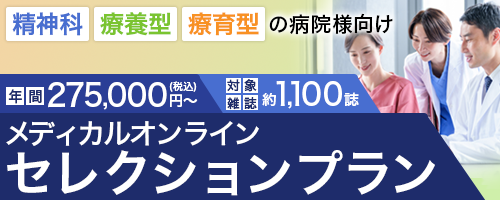アブストラクト
| Title | 第10回 SJS / TENと多形滲出性紅斑 |
|---|---|
| Subtitle | 連載 薬剤師のための特別講義! 専門医が教える薬疹, 薬剤性皮膚障害 |
| Authors | 渡邉裕子 |
| Authors (kana) | |
| Organization | 横浜市立大学大学院医学研究科環境免疫病態皮膚科学 |
| Journal | 調剤と情報 |
| Volume | 26 |
| Number | 11 |
| Page | 1986-1990 |
| Year/Month | 2020 / 8 |
| Article | 報告 |
| Publisher | じほう |
| Abstract | 「はじめに」スティーヴンス・ジョンソン症候群(Stevens-Johnson syndrome : SJS)と中毒性表皮壊死症(toxic epidermal necrolysis : TEN)は最重症の薬疹で, 皮膚障害や粘膜障害を生じるだけでなく, さまざまな臓器障害や細菌感染症などの合併症を起こし, 時に死亡することもある重篤な疾患です. TENの多くはSJSから始まり, 急速に表皮剥離が全身に拡大してより重篤になります. 一方, 類似の皮膚所見がみられる多形滲出性紅斑(erythema exsudativum multiforme : EEM)の約90%は, 単純ヘルペス, 溶連菌, マイコプラズマなどの感染症に関連し, 薬剤性のEEMは少ないとされていますが, 被疑薬の精査が十分行われていない可能性もあります. 以前, EEMはSJSの早期病変と考えられていましたが, 原因や組織学的所見, 治療, 予後など多くの点で異なり, 現在では別の疾患として認知されています. |
| Practice | 薬学 |
| Keywords |
- 全文ダウンロード: 従量制、基本料金制の方共に803円(税込) です。
参考文献
- 1) 相原道子: 薬物アレルギー 薬疹の診断と対応update. アレルギー, 67: 1399-1404, 2018
- 2) 渡辺秀晃: 薬疹としての多型紅斑; target後半の分布や性状のとらえ方. MB Derma, 247: 23-30, 2019
- 3) Sekula P, et al: Comprehensive survival analysis of a cohort of patients with Stevens-Johnson syndrome and toxic epidermal necrolysis. J Invest Dermatol, 133: 1197-1204, 2013
- 4) 北見周, 他: Stevens-Johnson症候群ならびに中毒性表皮壊死症の全国疫学調査; 平成20年度厚生労働科学研究費補助金(難治性疾患克服研究事業)重症多形滲出性紅斑に関する調査研究. 日本皮膚科学会誌, 121: 2467-2482, 2011
- 5) 塩原哲夫, 他: 重症多形滲出性紅斑スティーヴンス・ジョンソン症候群・中毒性表皮壊死症診療ガイドライン. 日本皮膚科学会誌, 126: 1637-1687, 2016
残りの11件を表示する
- 6) Jeudy G, et al: Successsful switch to dabrafenib after vemurafenib-induced toxic epidermal necrolysis. Br J Dermatol, 172: 1454-1455, 2015
- 7) Saito N, et al: An annexin A1- FPR1 interaction contributes to necroptosis of keratinocytes in severe cutaneous adverse drug reactions. Sci Transl Med, 6: 245ra95, 2014
- 8) Tohkin M, et al: A whole-genome association study of major determinants for allopurinol related Stevens-Johnson syndrome and toxic epidermal necrolysis in Japanese patients. Pharmacogenomics J, 13: 60-69, 2013
- 9) Kaniwa N, et al: Specific HLA types are associated with antiepileptic drug-induced Stevens-Johnson syndrome and toxic epidermal necrolysis in Japanese subjects. Pharmacogenomics, 14: 1821-1831, 2013
- 10) Ueta M, et al: Association of HLA class I and II gene polymorphisms with acetaminophen-related Stevens-Johnson syndrome with severe ocular complications in Japanese individuals. Hum Genome Var, 28: 50, 2019
- 11) Ozeki T, et al: Genome-wide association study identifies HLA-A*3101 allele as a genetic risk factor for carbamazepine-induced cutaneous adverse drug reactions in Japanese population. Hum Mol Genet, 20: 1034-1041, 2011
- 12) Wu X, et al: Association of CYP2C9*3 with phenytoin-induced Stevens-Johnson syndrome and toxic epidermal necrolysis: a systematic review and meta-analysis. J Clin Pharm Ther, 43: 408-413, 2018
- 13) Yamane Y, et al: Retrospective analysis of Stevens-Johnson syndrome and toxic epidermal necrolysis in 87 Japanese patients: treatment and outcome. Allergol Int, 65: 74-81, 2016
- 14) Kunimi Y, et al: Statistical analysis of Stevens-Johnson syndrome caused by Mycoplasma pneumonia infection in Japan. Allergol Int, 60: 525-532, 2011
- 15) Aihara M, et al: Efficacy of additional i.v. immunoglobulin to steroid therapy in Stevens-Johnson syndrome and toxic epidermal necrolysis. J Dermatol, 42: 768-777, 2015
- 16) Wang XQ, et al: Lamotrigine-induced severe cutaneous adverse reaction: update data from 1999-2014. J Clin Neurosci, 22: 1005-1011, 2015



